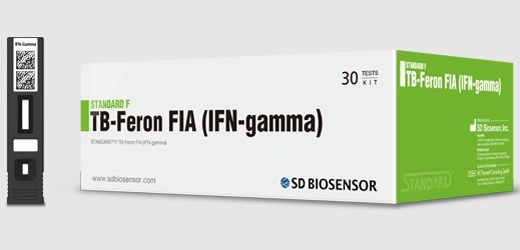Novel Coronavirus Detected by Molecular Technique
By LabMedica International staff writers
Posted on 08 Oct 2012
Two polymerase chain reaction (PCR) assays have been developed for the novel human coronavirus that causes a respiratory illness similar to the severe acute respiratory syndrome SARS) virus that spread globally in 2003. Posted on 08 Oct 2012
Coronaviruses (CoV) are large positive-stranded ribonucleic acid (RNA) viruses causing mainly respiratory and enteric disease in a range of animals and in humans who are known to maintain circulation of four different human coronaviruses (hCoV) at a global population level.
Scientists at the University of Bonn Medical Center (Germany) collaborating with others, developed diagnostic real-time reverse-transcription polymerase chain reaction (RT-PCR) assays suitable for qualitative and quantitative detection of the new agent. They evaluated the technical and analytical performance of these assays.
A provisional genome sequence as well as an isolate of the new virus was obtained. The sequence for the Rotterdam virus isolate, termed hCoV-EMC served as the template for assay design, and the virus was used for initial validation experiments. Respiratory swab, sputum, and endotracheal aspirate material was obtained during 2010–2012 from several hospital wards of the University of Bonn Medical Center.
Upon scanning of a provisional genome assembly, a region upstream of the putative E gene was identified as a particularly suitable target region for a real-time RT-PCR assay. The assay designed for this region is referred to as the upE-assay. A confirmatory test was designed in the open reading frame 1b, termed the ORF1b assay. This target gene did not overlap with those of known pan-CoV assays including the SARS virus that killed hundreds of people in 2003.
To obtain a more clinically relevant figure on assay specificity, the assays were applied on 92 original clinical samples in which other respiratory viruses had already been detected during routine respiratory screening. These samples were prepared using a Viral RNA kit (Qiagen; Hilden, Germany), a formulation widely used to extract RNA in clinical laboratories. Of note, the tested panel included four samples containing hCoV-HKU1, which was not available as cultured virus stock.
In total, none of the 92 original clinical samples, containing a wide range of respiratory viruses, gave any detection signal with either assay while positive controls were readily detected. It was concluded that the assay could be reliably applied to clinical samples. Both assays provided very clear amplification signal on various clinical samples from the patients with the suspected virus. The upE assay appeared more sensitive than the ORF1b assay.
The open availability of proven diagnostic assays early in an epidemic is useful in order to equip and prepare public health laboratories efficiently. The authors will provide in vitro transcribed RNA controls to health professionals, but will not be able to provide intense technical advice. Authors will follow the policy of providing only one control, namely that for the upE assay, in order to minimize opportunities for accidental laboratory contamination. If laboratories find patient samples positive by the upE assay and control, they can conduct confirmatory testing using the ORF1b assay. A positive result in this test would most likely not be due to contamination. The study was published on September 27, 2012, in the journal Eurosurveillance.
Related Links:
University of Bonn Medical Center
Qiagen














